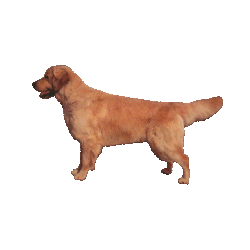Table of Contents
Toggle
How to Care for Your Golden Retriever’s Health
The Golden Retriever is one of the most popular dog breeds in the world due to its beauty, gentle disposition, and intelligence. Unfortunately, like many other breeds, Golden Retrievers are prone to certain health issues, including joint dysplasia. In this article, we will discuss what dysplasia is in Golden Retrievers, its causes, symptoms, diagnosis, treatment, and how to prevent this condition.
Introduction
Joint dysplasia is a condition where the joints do not develop properly, leading to discomfort and pain in dogs. In Golden Retrievers, this most commonly affects the hip and elbow joints. It is a genetic problem that can impact a dog’s quality of life.
Causes of Dysplasia
The causes of joint dysplasia in Golden Retrievers are complex. Genetics play a crucial role, but there are also environmental and lifestyle factors that can increase the risk of this condition. Therefore, it’s important to choose reputable breeders and maintain a healthy lifestyle for your dog.
Symptoms and Diagnosis
Symptoms of joint dysplasia in Golden Retrievers may include stiffness, an unstable gait, difficulty getting up, and painful movements. Diagnosis is based on clinical examinations, X-rays, and observing the dog’s behavior.
Treatment and Care
The treatment of dysplasia may involve both surgical and non-steroidal options. Surgery may be necessary in cases of advanced joint changes. Non-steroidal pain relievers and supplements can help alleviate symptoms.
Providing appropriate care for the dog is also essential. This includes controlling weight, regular physical activity, following medication recommendations from the veterinarian, and ensuring the dog’s comfort.
Preventing Dysplasia
While it’s impossible to completely eliminate the risk of joint dysplasia, there are steps you can take to minimize it. When choosing a puppy, it’s important to check the health history of the parents and make sure they have been screened for dysplasia. Maintaining the dog’s physical fitness, avoiding excessive exercise at a young age, and providing a suitable diet are also crucial.
Tips for Owners
If your Golden Retriever has joint dysplasia, there are steps you can take to help them live comfortably. Regular veterinary visits, adjusting the dog’s activity level to their capabilities, and following recommended treatments are key aspects of caring for a dog with dysplasia.
Conclusion
Joint dysplasia is a problem that can affect Golden Retrievers, but proper care and a conscious approach to the dog’s health can significantly improve their quality of life. By choosing a puppy carefully, collaborating with a veterinarian, and maintaining a healthy lifestyle, you can help your beloved pet avoid the pain and discomfort associated with joint dysplasia.
